Some of the links in this post may be affiliate links.
Are you wondering about how to choose the best pots for Hoyas? The simple answer is that there are many types of pots that work well. But there are some important things that you do need to know in order to choose the best pot. Keep reading to learn more.
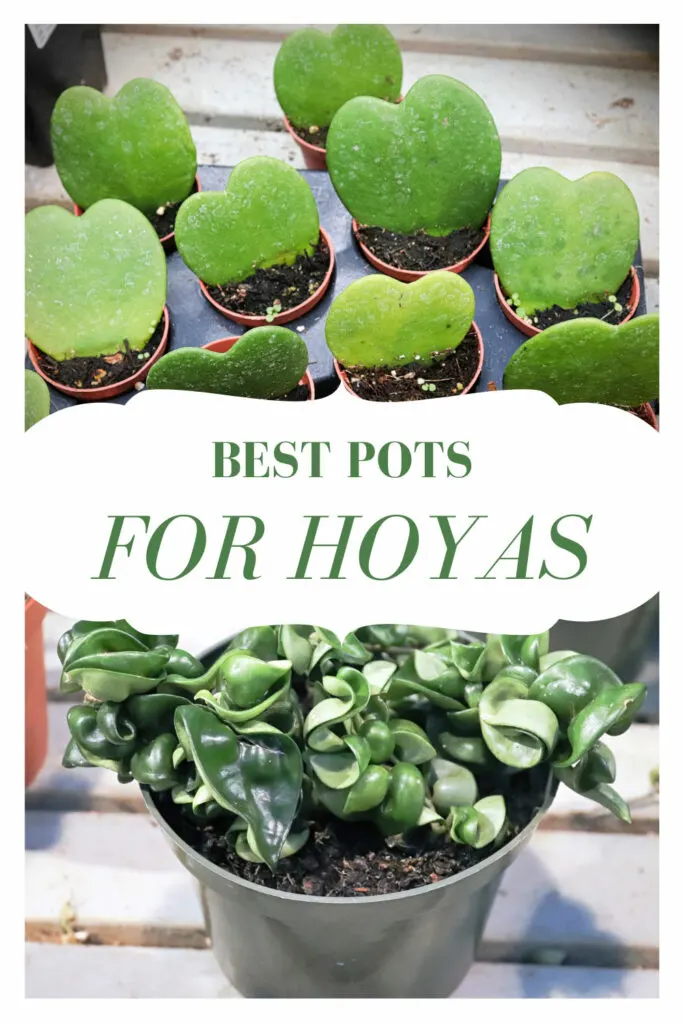
Table of Contents
BEST POTS FOR HOYAS
The most important aspects of choosing a pot type are the following, and please keep reading as there are many nuances to consider.
When choosing the best pots for Hoyas, consider the following:
- Drainage holes are a must! Enough said.
- The size of the pot is very important.
- You can use many different pot types, and you can choose depending on your indoor growing conditions and watering habits.
1. DO HOYAS LIKE BIG POTS?
The size of the pot will vary depending on the size of your Hoya’s root system. A good general rule of thumb is to only go up ONE pot size when repotting Hoya plants.
(And you don’t want to repot until your Hoya plant is root bound).
For example, if your Hoya is in a 4 inch diameter pot and it’s time to repot, only go up to the next pot size up (6 inch diameter).
Why is this? The main reason is that Hoyas need to dry out pretty quickly in between watering. If you overpot your Hoya and place it in a pot that is much too large, the excess volume of potting mix will take too long to dry out.
If you want an amazing mix to use right out of the bag, check out the amazing Hoya soil blend from Oh Happy Plants. This is an amazing mix and you will get 10% off at checkout automatically if you use my link.
Which leads us to…
2. DO HOYAS LIKE TIGHT POTS?
Yes, Hoyas prefer to live in smaller pots. There are 2 main reasons for this:
- Assuming you have your plant in good light, having a root bound Hoya will help produce better flowering.
- The soil will dry out in much less time.
3. HOYAS IN TERRA COTTA vs. PLASTIC POTS
TERRA COTTA POTS
Any pot type will work, but like I mentioned, there are nuances. Terra cotta pots are great for some people. Since they are very porous, they will dry out much more quickly than other types of pots.
If you tend to go heavy with your watering can and “overwater“, terra cotta pots would be great for you. Keep in mind that the smaller the terra cotta pot is, the more quickly it will dry out, and they can dry out exceedingly fast.
This can be both a pro and a con. For me personally, it’s a con because I don’t like to water frequently.
PLASTIC POTS
Plastic pots will retain moisture much more than terra cotta pots. As long as your potting mix dries out in a reasonable amount of time, you will be fine.
There are many factors that affect how quickly your potting mix dries out:
- The size and type of pot as mentioned above.
- The type of potting mix (the chunkier the mix, the more quickly it will dry out).
- Temperature (higher temps will dry out your plant more quicky).
- Higher light (will encourage blooming in your Hoya and will help dry your soil out more).
- Humidity (dry air will cause your soil to dry more quickly).
I take a holistic approach to houseplant care, and I discuss all of these topics in detail in my book, Houseplant Warrior.
The more succulent the Hoya is, the longer it can tolerate drying out. For example, Hoya obovata has nice, thick, juicy leaves and they can take drying out much more than thinner leaved Hoyas like Hoya multiflora.
In the end, the type of pot for your Hoya is all a personal choice, once you consider your watering habits and your indoor environment. Choose one that works for you!
ADDITIONAL RESOURCES
For more information on Hoyas, I have quite a few Hoya posts on my site. Here are some that you may enjoy!
Best Hoyas for Beginners (and within this post, I have links to the individual care of most/all the Hoyas mentioned.)
In addition, be sure not to miss my Indoor Plant Pot Types: 5 Great Choices w/ Pros and Cons for a more detailed discuss on the pros and cons of various pot types.

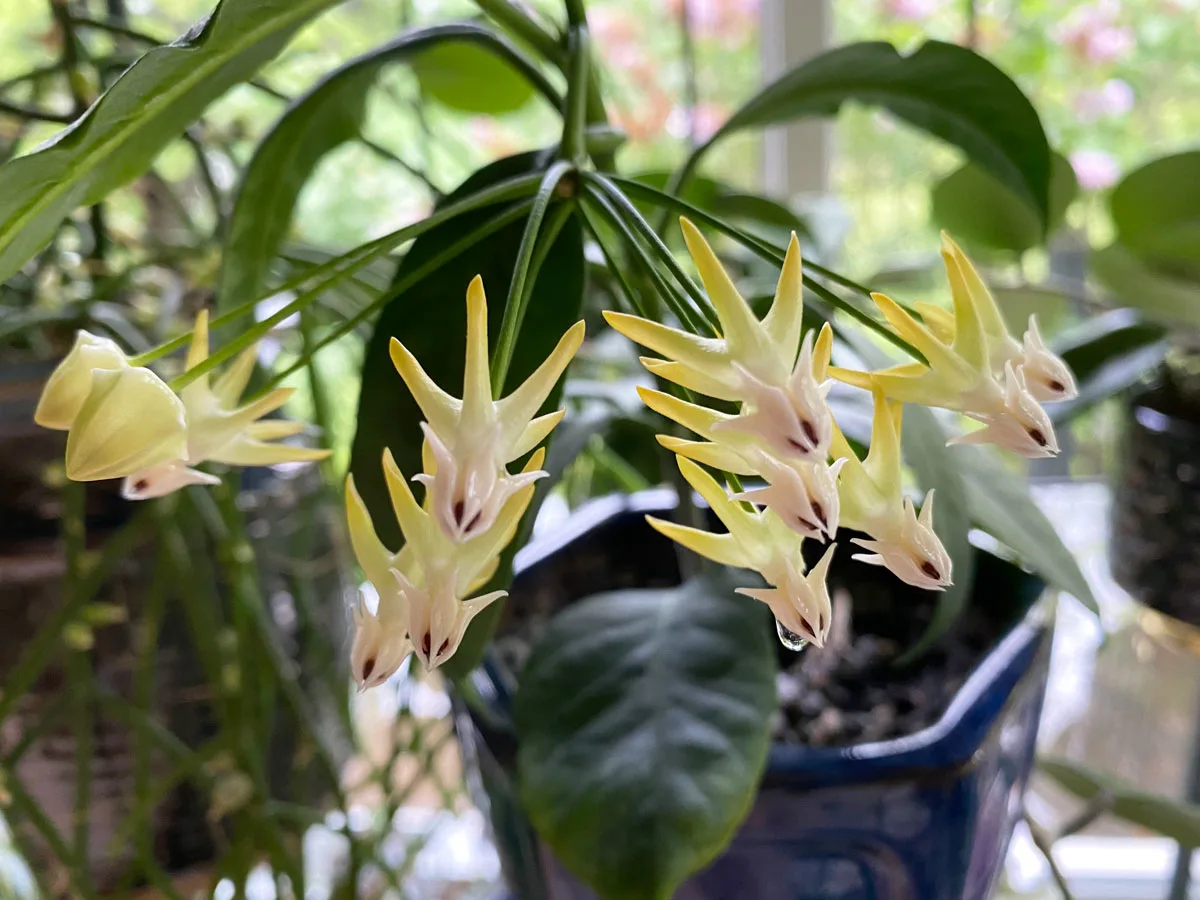
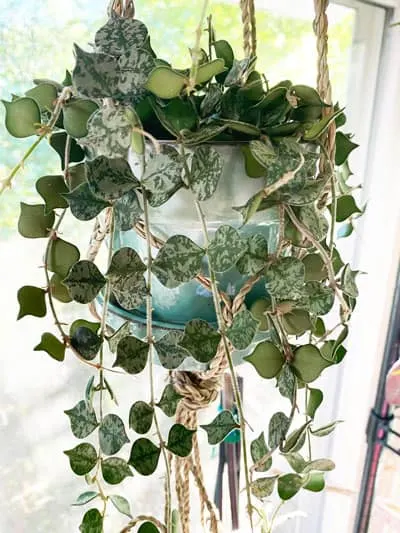
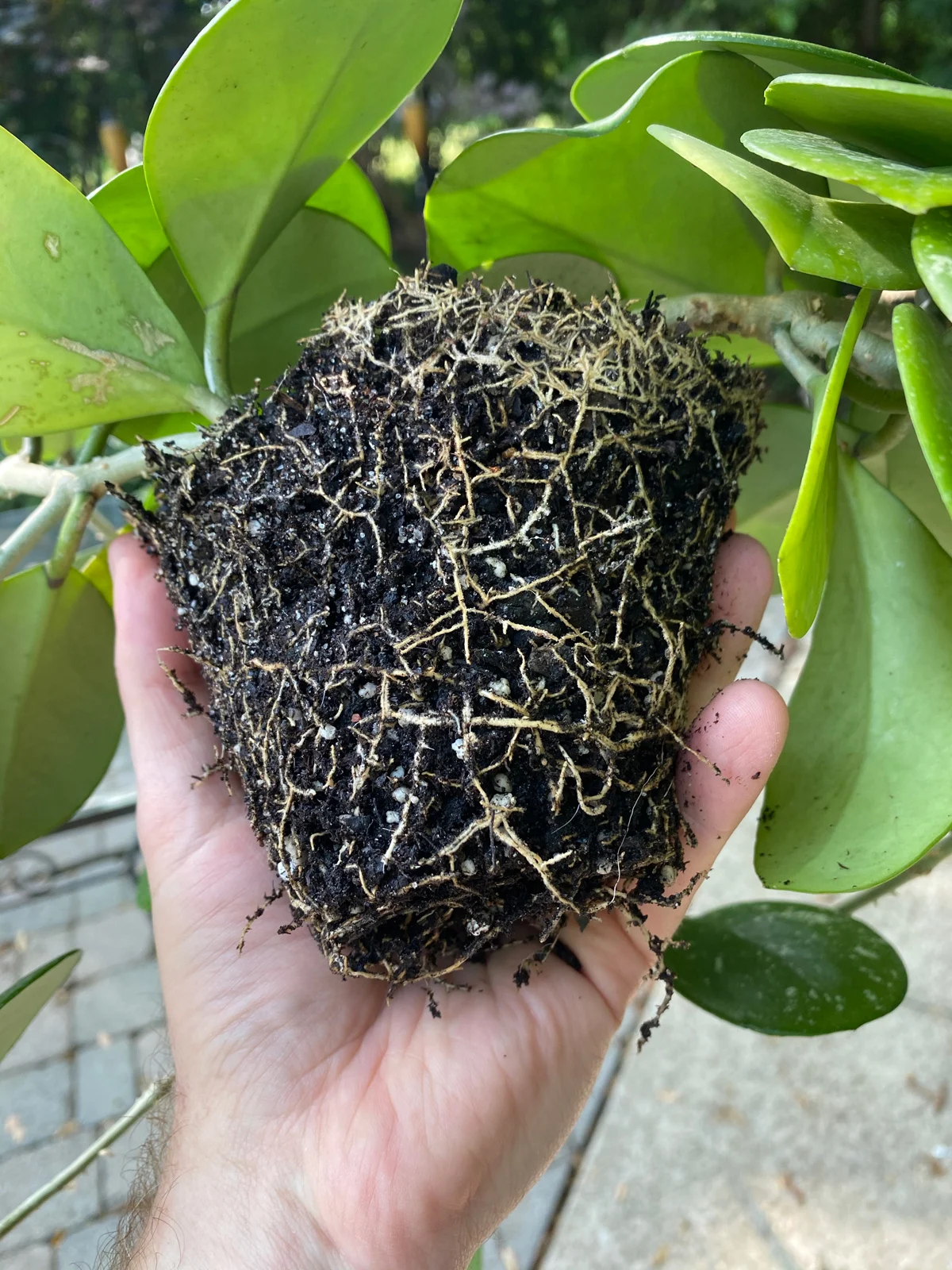
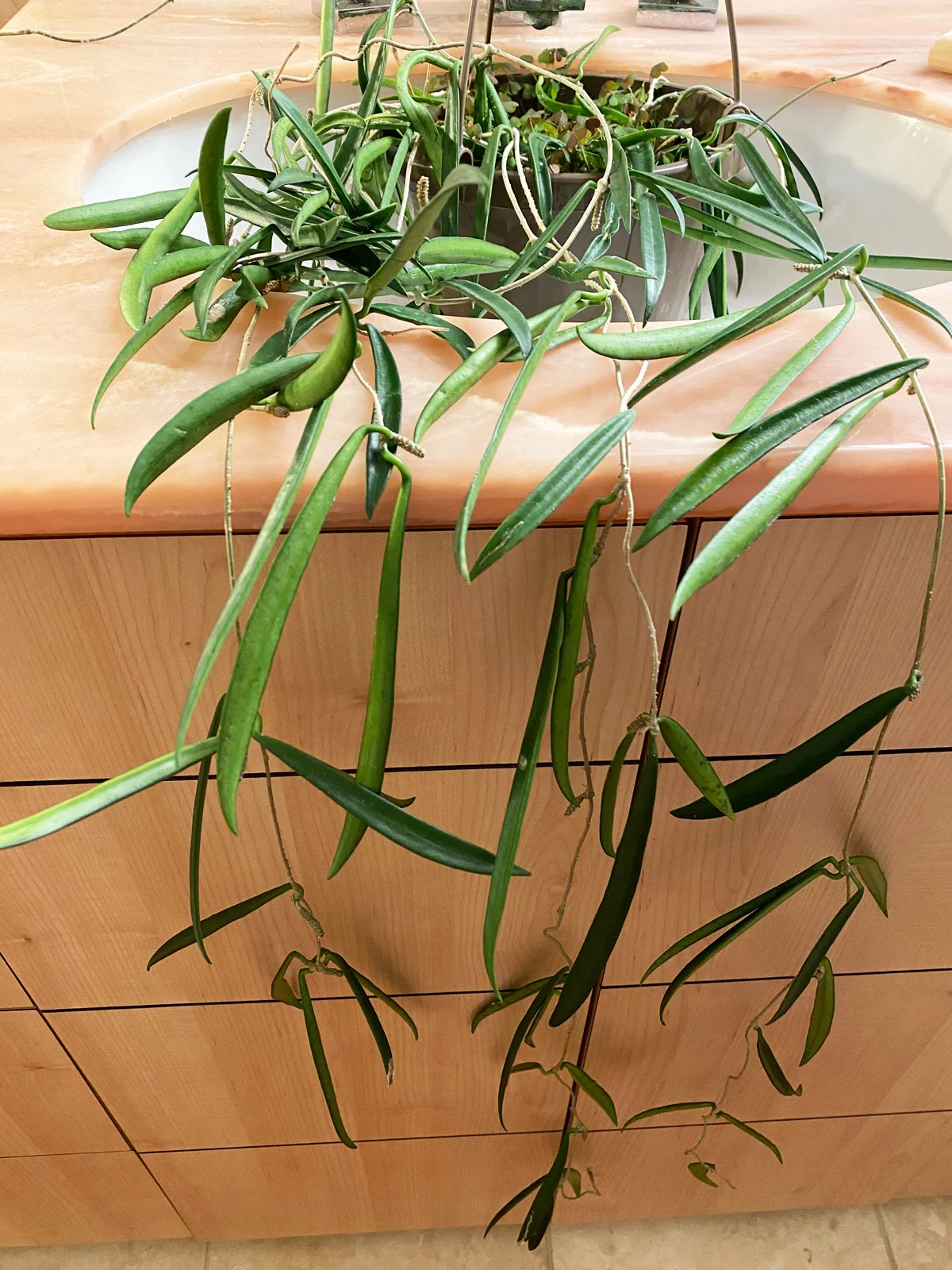
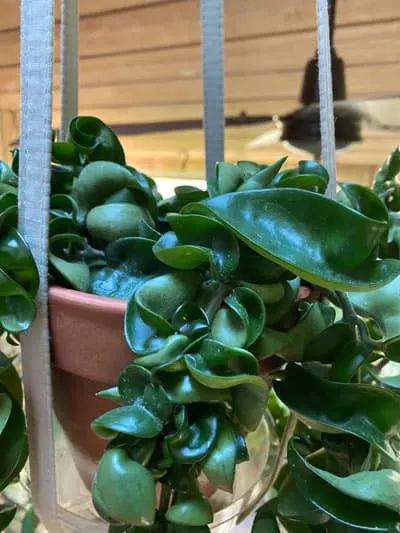
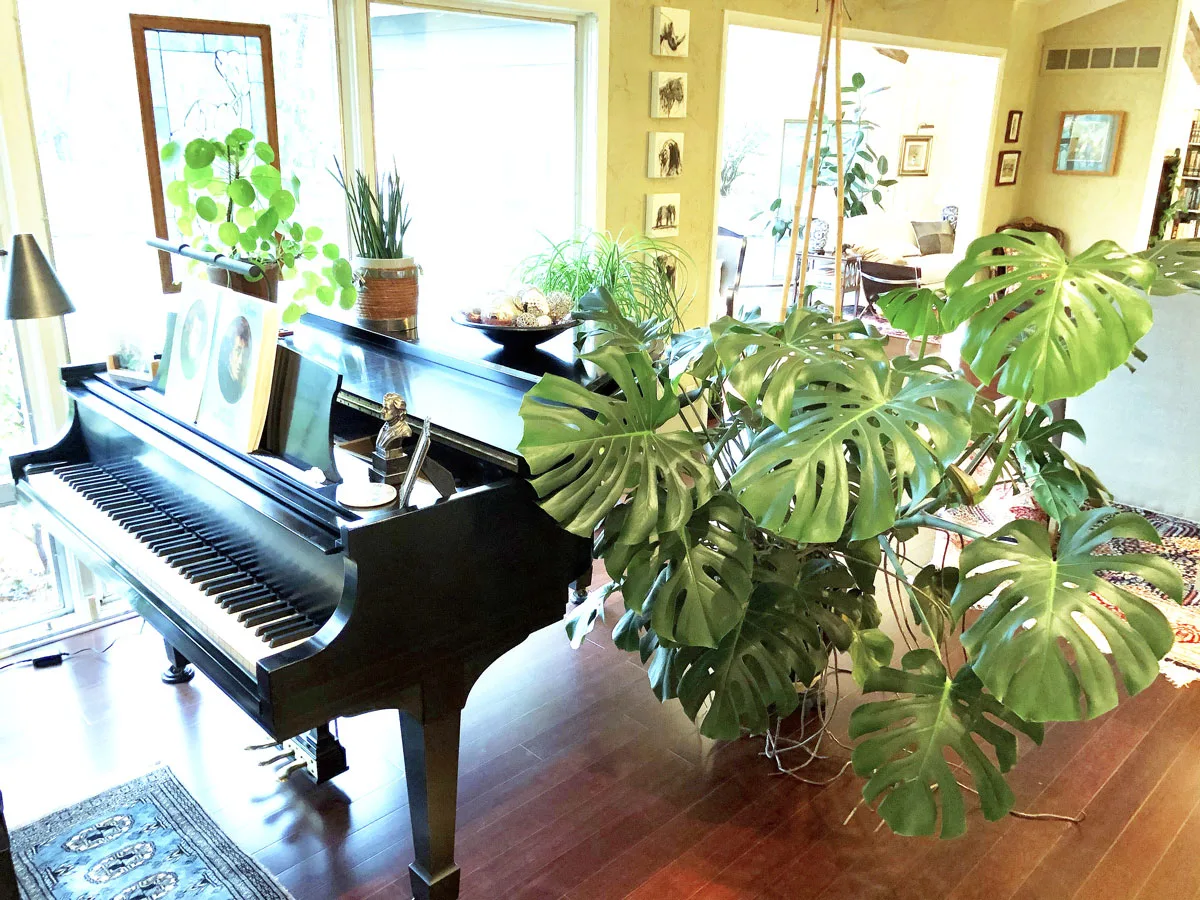
Sharon Duffy
Saturday 1st of April 2023
I have a 30 year old Hoya. It was transplanted about 10 years ago. I moved from Illinois to Alabama and noticed some of the leaves were dying. Then I noticed that there was standing water in the pot! Root rot??? Have ordered cactus soil and pumice and a newpot. Will I need to trim off the roots? How I’ll I know how much if any I should trim off the roots? I am afraid I will kill the very large plant! It is in a 10 inch pot. Thank you in advance for your help!! Sharon
Raffaele
Thursday 13th of April 2023
If the roots are soft and mushy and rotted, then yes. Trim them away and rinse them off. Leave any roots that are firm.
Kaci Lake
Sunday 7th of August 2022
Hi. I'm wondering if a self watering pot is good for the Hoya curtisii? I have a self watering pot that is made of a terra Cotta or ceramic type material that I 9ut my Hoya curtisii in but I worry that it's not a good match for the plant because the soil doesn't really ever dry out.
Barbara
Thursday 26th of October 2023
@Kaci Lake,
Any plant that likes or needs constant moisture. African violets, cyclamen, syngoniums; most aroids for that matter. Philodendron, Alocasia, Pothos, Peperomia, Hypoestes, fritonia. Think anything that grows in a rainforest setting and many be not stritchly an epiphyte.
Kaci Lake
Tuesday 9th of August 2022
@Raffaele, surprisingly enough the Hoya has done okay so far but I'm not going to add any more water to the bottom of it bc I don't want to risk any root rot. And I'll most likely report it as soon as I can afford a terra cotta pot. I prefer the terra Cotta over plastic for many reasons. Can you give me a list of some plants that'll do well with the self watering pot??
Raffaele
Sunday 7th of August 2022
It's probably not the best choice for Hoyas. You could probably get away with it if you use a really chunky potting mix (which you should do anyway for any self-watering pot). There are other plants that are better suited to self-watering pots. It's not to say that it can't be done though :-)